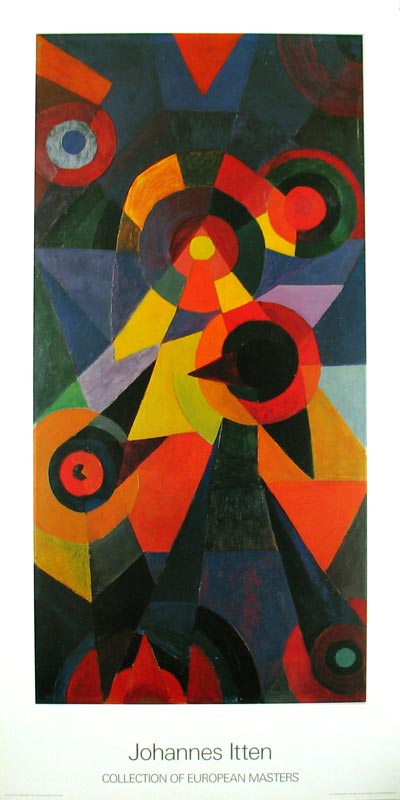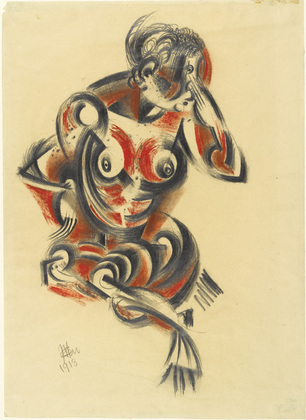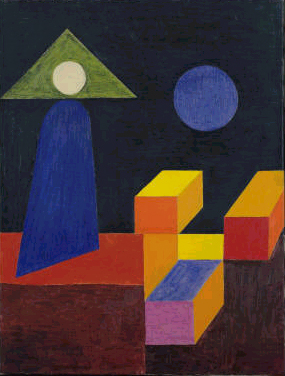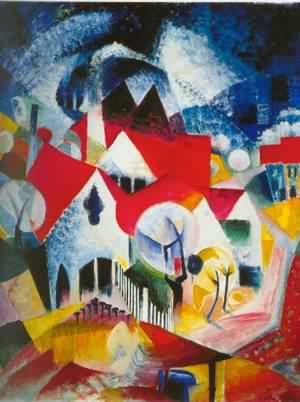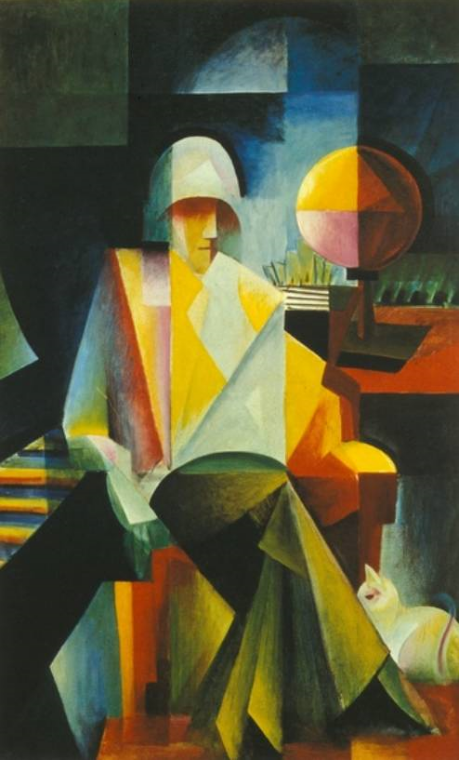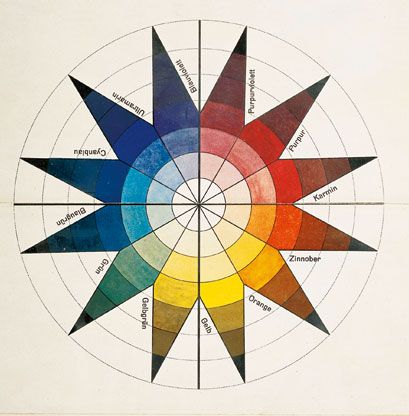<Back to Index>
- Painter and Designer Johannes Itten, 1888
PAGE SPONSOR
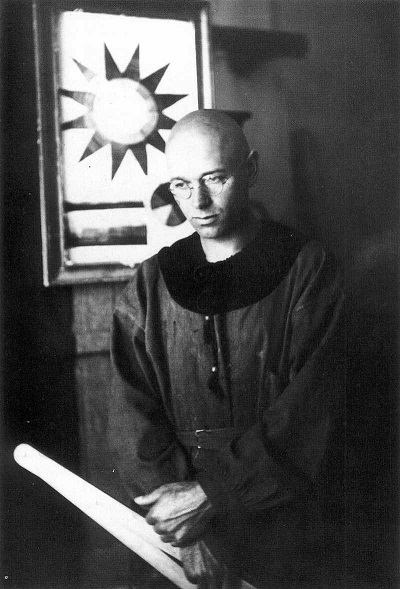
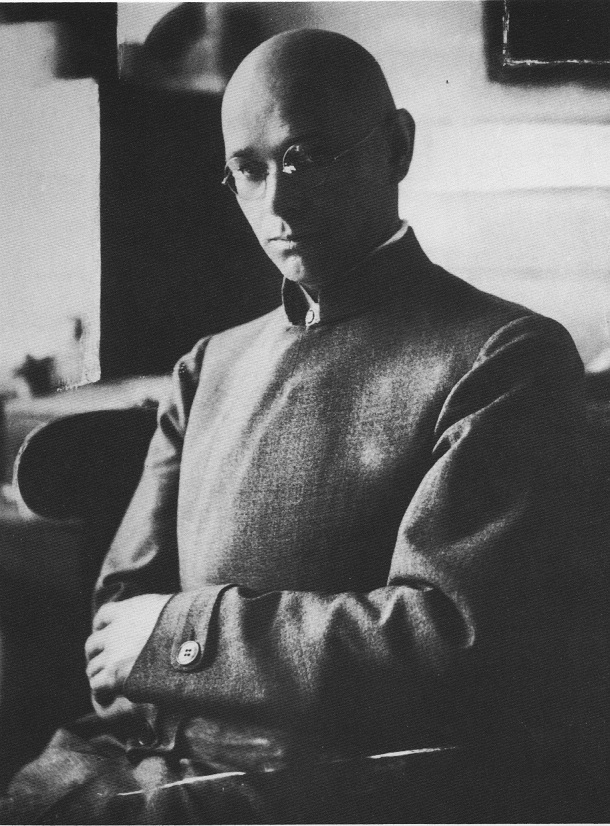
Johannes Itten (11 November 1888 – 27 May 1967) was a Swiss expressionist painter, designer, teacher, writer and theorist associated with the Bauhaus (Staatliche Bauhaus) school. Together with German - American painter Lyonel Feininger and German sculptor Gerhard Marcks, under the direction of German architect Walter Gropius, Itten was part of the core of the Weimar Bauhaus.
Born in Südern - Linden, Switzerland, he studied as an elementary school teacher from 1904 to 1908. Beginning in 1908 he taught using methods developed by Friedrich Fröbel and was exposed to the ideas of psychoanalysis. He later enrolled at the École des Beaux - Arts in Geneva but then returned to Bern, after being unimpressed with the educators there. Itten's studies at the Bern - Hofwil Teachers' Academy with Ernst Schneider proved seminal for his later work as a master at the Bauhaus. Itten adopted principles espoused by Schneider, including the practice of not correcting his students' creative work on an individual basis, for fear that this would crush the creative impulse. Rather, he selected certain common mistakes to correct for the class as a whole.
He was heavily influenced by Adolf Hölzel and Franz Cižek, in Vienna using the work and textbook of Eugène Gilliard, an abstract painter,
as a base. From Hölzel, Itten adopted a series of basic shapes
(the line, the plane, the circle, the spiral) as a means from which to
begin creation, and the use of gymnastic exercises to relax his students and prepare them for the experiences that were to occur in the class.
From 1919 to 1922, Itten taught at the Bauhaus, developing the innovative "preliminary course" which was to teach students the basics of material characteristics, composition, and color. In 1920 Itten invited Paul Klee and Georg Muche to join him at the Bauhaus. He also published a book, The Art of Color, which describes these ideas as a furthering of Adolf Hölzel's color wheel. Itten's so called "color sphere" went on to include 12 colors. In 1924, Itten established the “Ontos Weaving Workshops” near Zurich, with the help of Bauhaus weaver Gunta Stölzl.
Itten was a follower of Mazdaznan, a fire cult originating in the United States that was largely derived from Zoroastrianism. He observed a strict vegetarian diet and practiced meditation as a means to develop inner understanding and intuition, which was for him the principal source of artistic inspiration and practice. Itten's mysticism and the reverence in which he was held by a group of the students some of who converted to Mazdaznan (e.g. Georg Muche) created conflict with Walter Gropius who wanted to move the school in a direction that embraced mass production rather than solely individual artistic expression. The rift led to Itten's resignation from the Bauhaus and his prompt replacement by Laszlo Moholy - Nagy in 1923. From 1926 to 1934 he had a small art and architecture school in Berlin, in which Ernst Neufert, the former chief architect of Walter Gropius at the Bauhaus, taught as well from 1932 to 1934.
Itten's works exploring the use and composition of color resemble the square op art canvases of artists such as Josef Albers, Max Bill and Bridget Riley, and the expressionist works of Wassily Kandinsky.
Itten held the following posts during his professional career:
- 1926 – 1934 Private art school in Berlin
- 1932 – 1938 Director of the Textilfachschule in Krefeld
- 1938 – 1954 Director at the Kunstgewerbeschule
- 1943 – 1960 Director of the Textilfachschule in Zürich
- 1949 – 1956 Director of the Museum Rietberg, Zürich, a museum for non-European art
- 1955 works as freelance painter
- 1955 colour courses at the HfG Ulm (Hochschule für Gestaltung Ulm)
